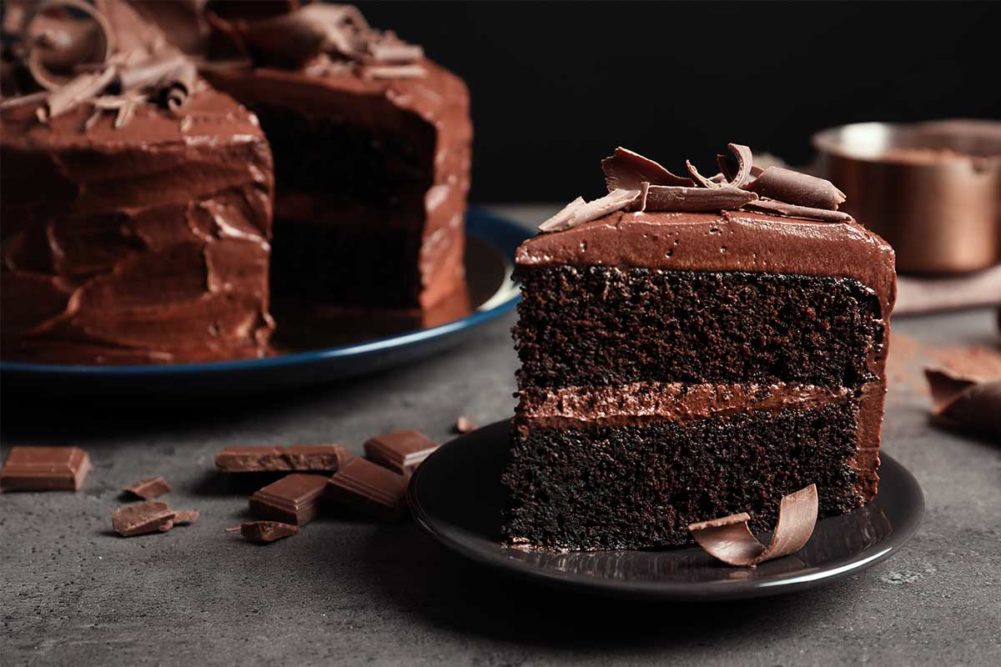Cakes are as varied as the occasions for eating them: from celebrations with multi-layer birthday and wedding cakes to everyday treats like blueberry muffins at breakfast or snack cakes for an afternoon pick-me-up. Their texture can range from the lightest angel food bundt cake to dense pound cake or decadent fudge cake.
When bakers need to either partially or fully replace the eggs in these varied creations, they must first understand the functionality they bring to the type of cake they’re baking. And eggs bring plenty of it.
“Proteins in egg white and lecithin in egg yolk assist with aeration, emulsification, thickening and stability of the batter,” said Becky Regan, principal application scientist, sweet goods bakery applications, IFF. “Egg proteins help trap air during mixing and surround the air bubbles, which make a more stable foam or batter that can hold up during bench time or delays during processing. Stable batters produce cakes with finer, more uniform crumb grain without large holes or tunnels. The egg proteins denature and coagulate during baking to set and strengthen the cake structure, producing a larger cake and reducing shrinkage and collapse during cooling.”
Bakers face several formulation challenges when replacing eggs, often needing several ingredients to make up the many attributes eggs bring to cakes.
“There are very few ingredients, if any, that claim to replace eggs 100% without major formulation and processing adjustments,” explained Jennifer Stephens, vice president of marketing, Fiberstar Inc. “Most egg replacement solutions require multiple ingredients. And if these water-holding ingredients are not dialed in correctly, they tend to create wet and gummy textures. On the other hand, since eggs also bind water to contribute moistness, not optimizing the formulation and baking process may create dry and crumbly textures.”
Aaron Reed, senior food technologist, Cargill, also mentioned concerns about texture and structure and the possibility of creating a gummy texture when replacing eggs in cakes.
“Adding soy flour to the formula can help, but in egg-dependent applications like cakes, there are limits to how deep a reduction you can make without facing major texture challenges,” he explained.
The number of ingredients required to replace eggs in cake depends on the product’s formula. The combination of ingredients must work well together.
“One thing to consider is that if you add one ingredient for a particular functionality and another ingredient for a particular functionality, those ingredients also need to be synergistic with each other in order to actually replace the functionality of eggs,” said Brook Carson, vice president, R&D, Manildra Group USA. “Otherwise, you may end up with good volume but poor texture, or maybe the wrong moisture content or eating properties.”
She added that the formulation challenges change based on the type of cake because they have varied ingredient ratios.
“A high-ratio layer cake may be easier to replace eggs as compared to a sponge cake because the quantity of eggs is different,” Carson said. “The more eggs you need to replace, the more difficult it can be. The more structure built by eggs, rather than flour, the more difficult it can be. Additionally, your egg replacer needs to have a good amount of emulsification to carry the fat in the system. Cakes with high levels of fat can be more difficult to replace the eggs because you need a high amount of emulsification to account for that fat.”
Bakers must consider not only the type of cake but also how it’s prepared.
“There is not a single egg replacement solution that will work in all cakes,” Regan said. “The approach must be tailored to the specific cake type, for example, layer cake, foam cake, pound cake; form of egg, egg white or whole egg; formula; and how the cake batter is prepared, such as single stage all-in mix, multi-stage mix, high-speed mechanical mix.”
This article is an excerpt from the March 2024 issue of Baking & Snack. To read the entire feature on Egg Replacement, click here.





